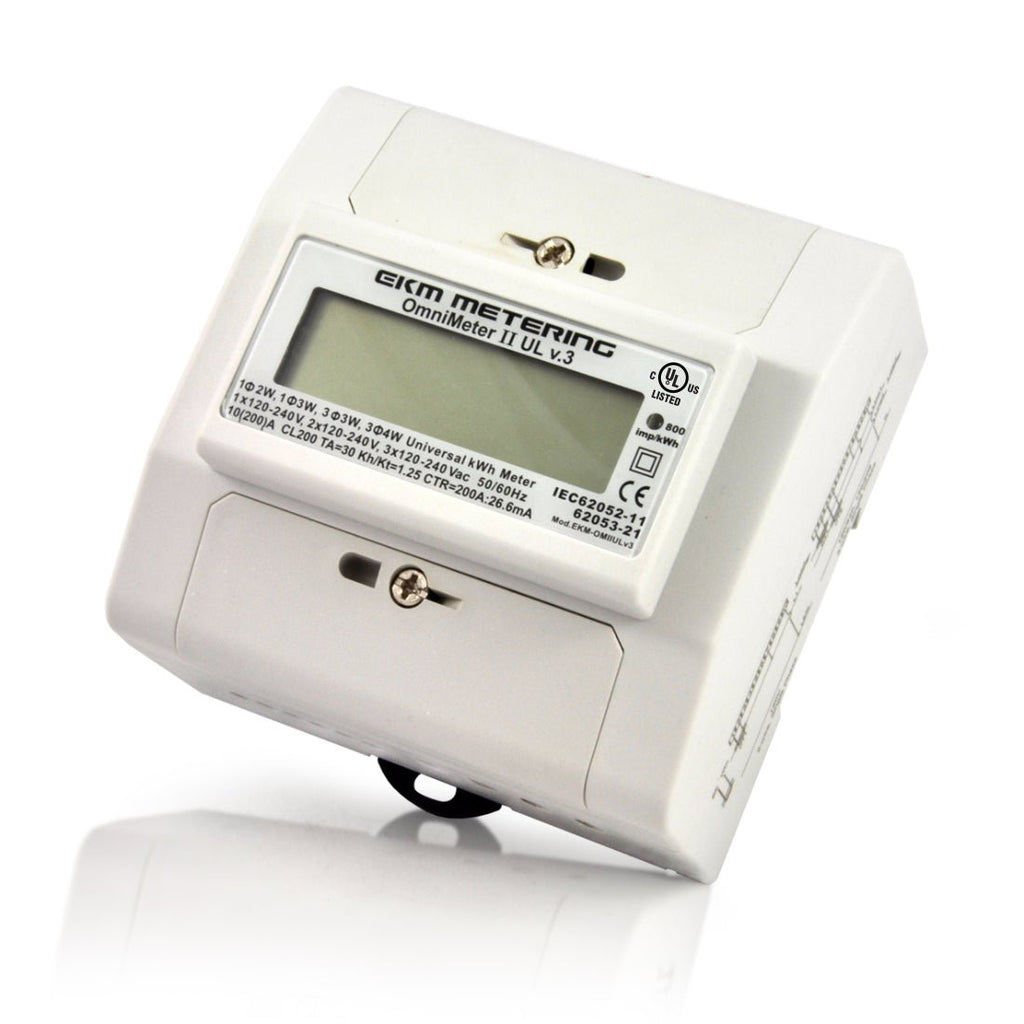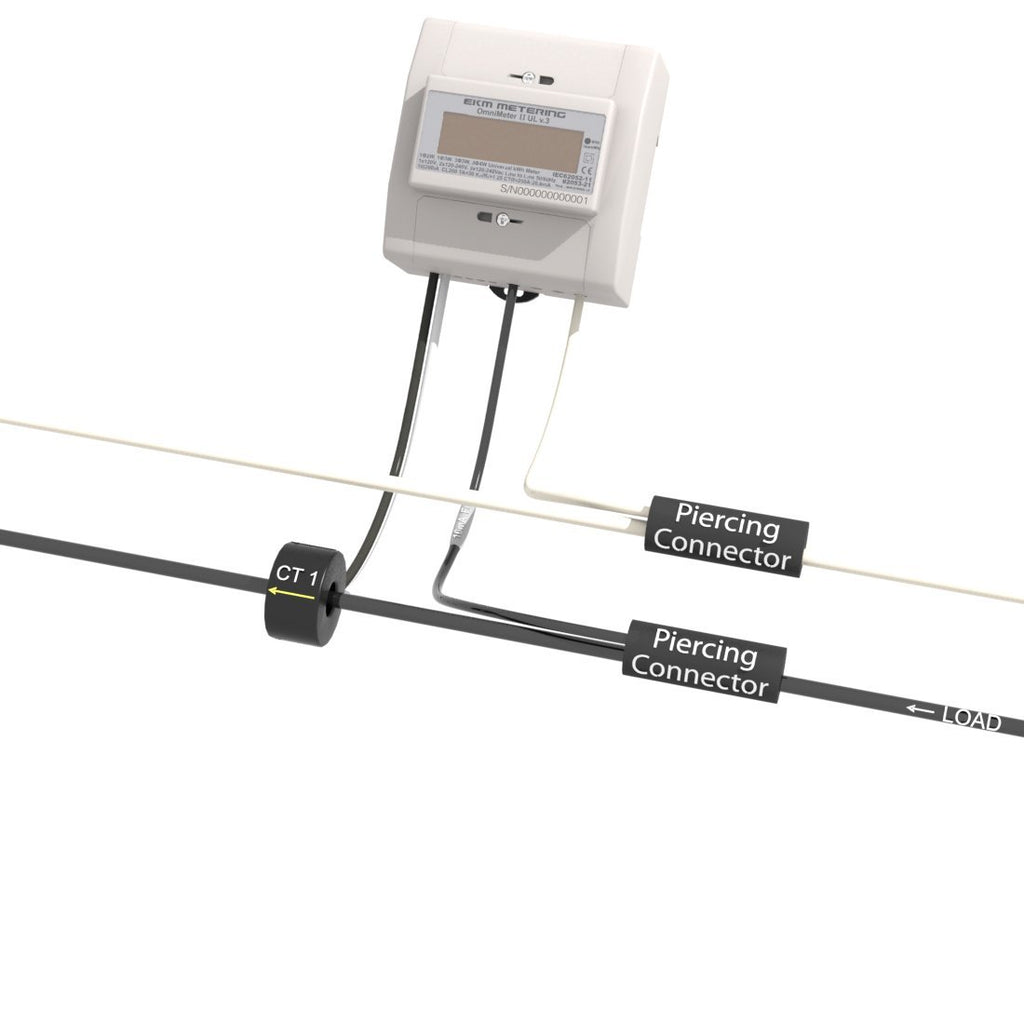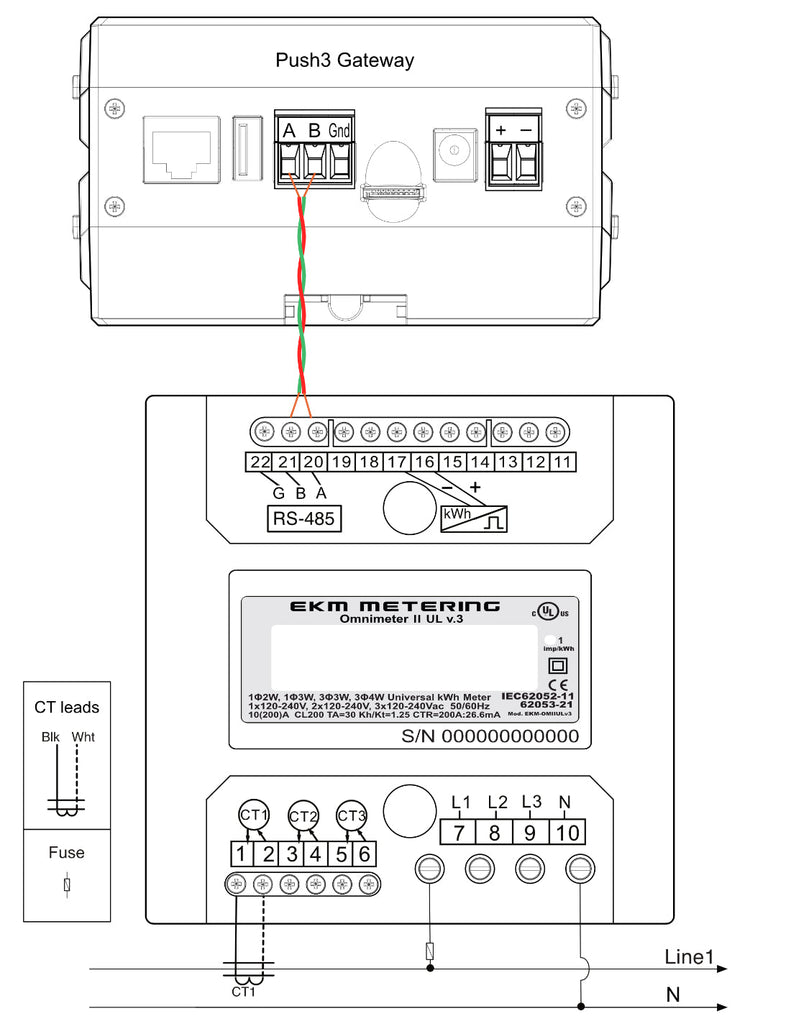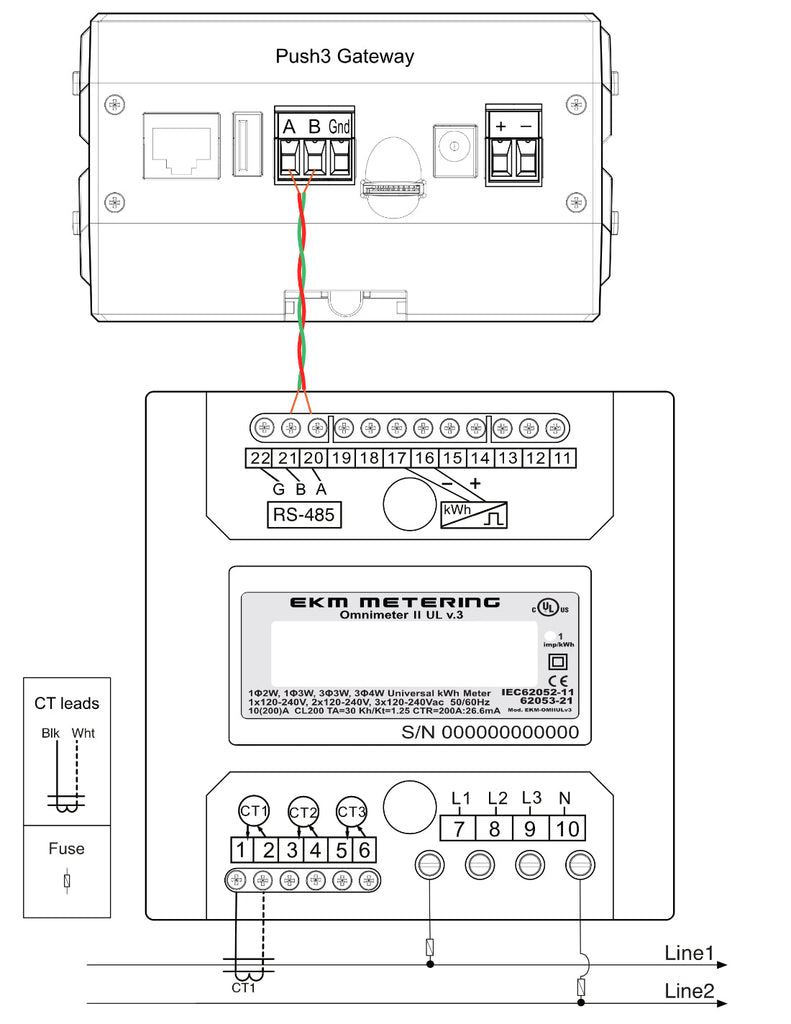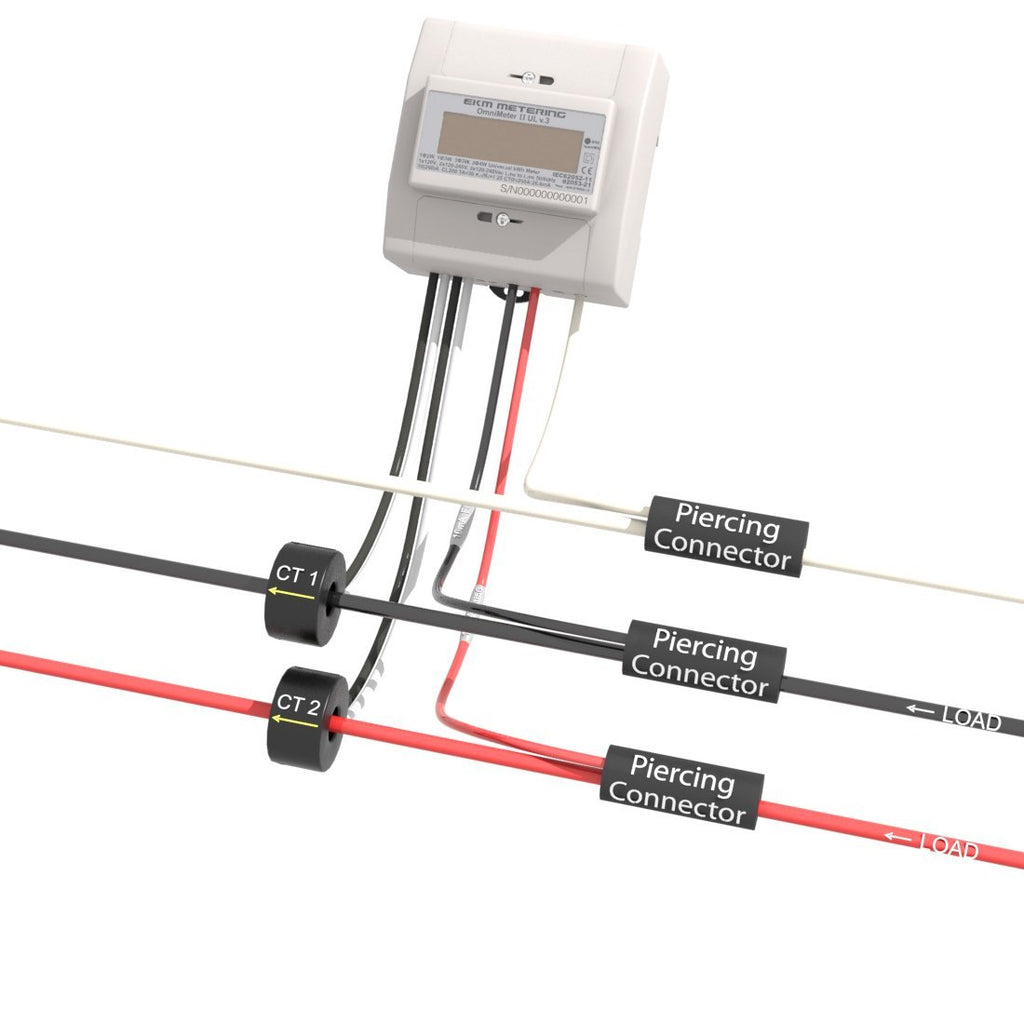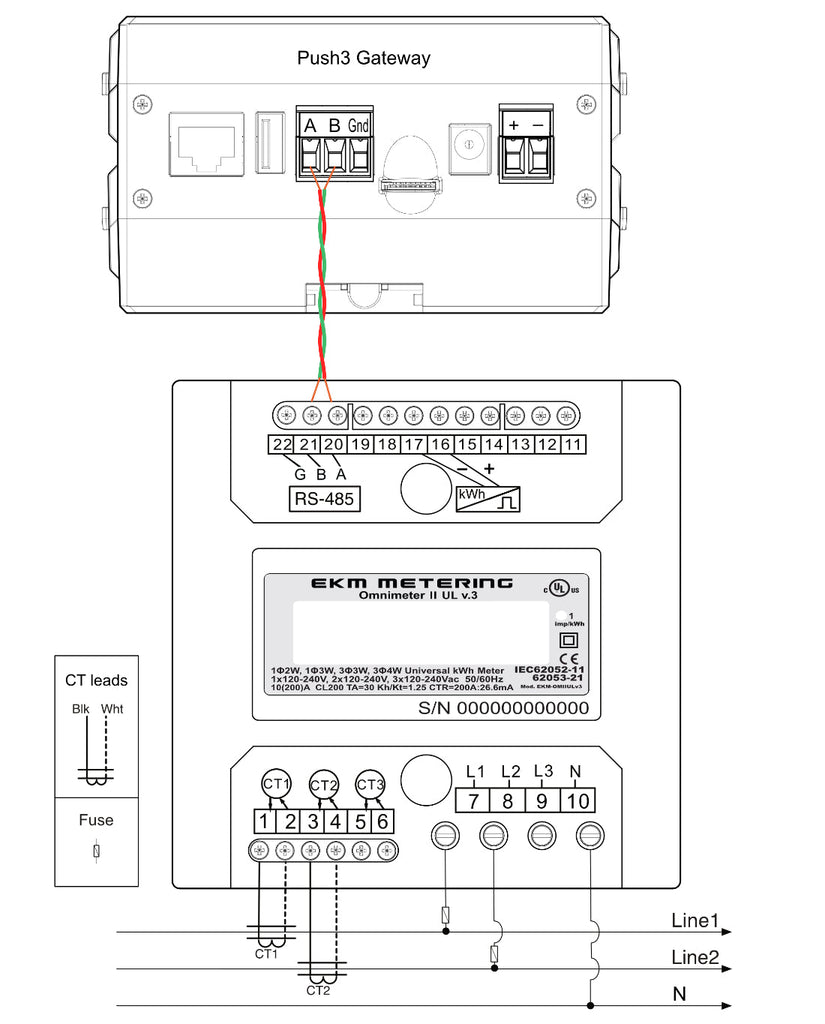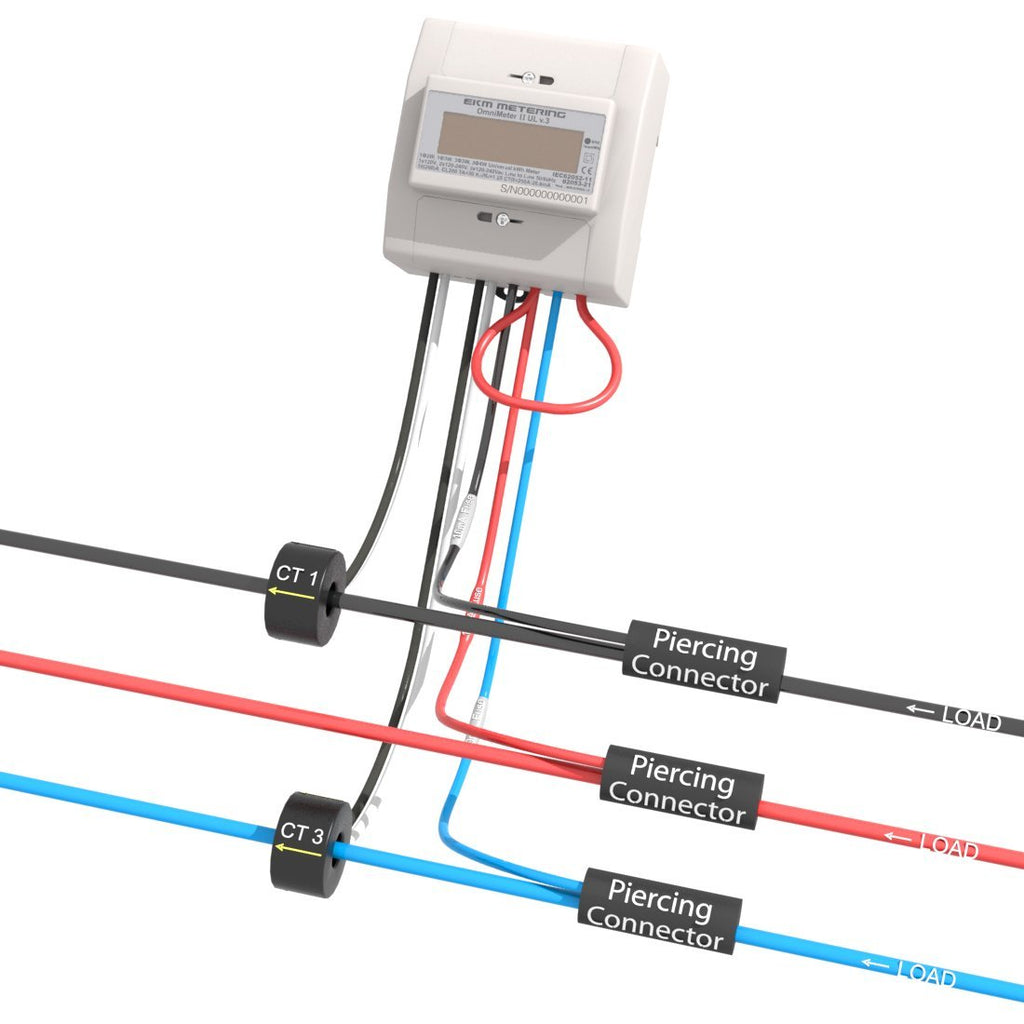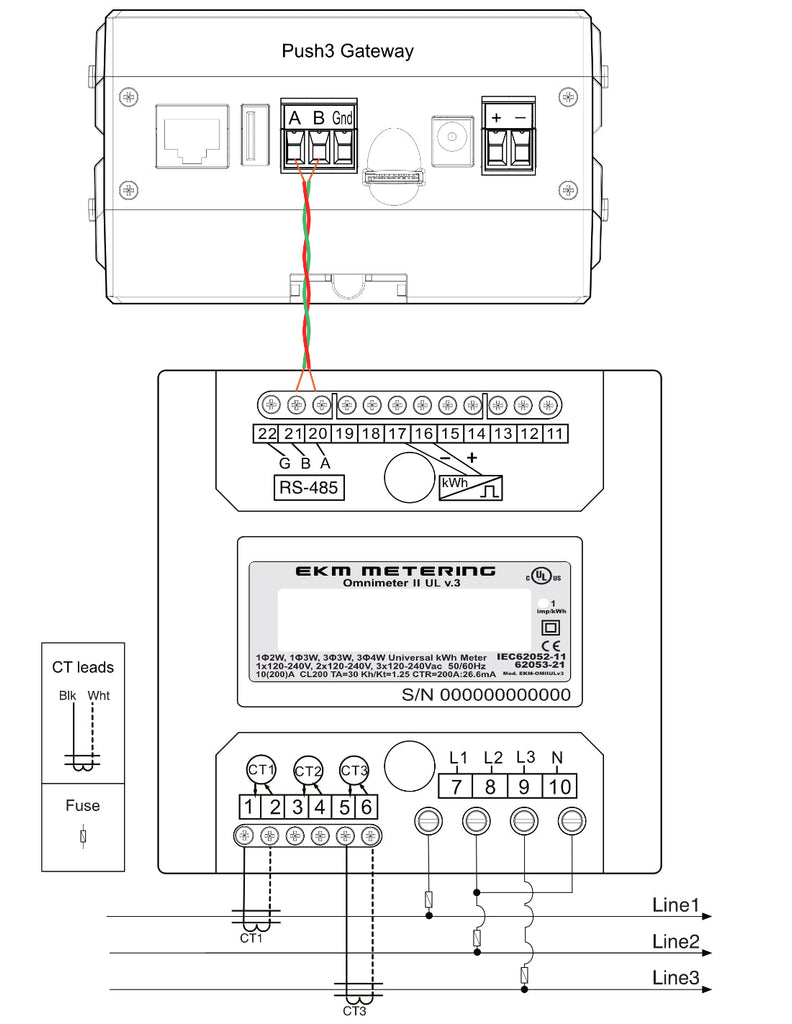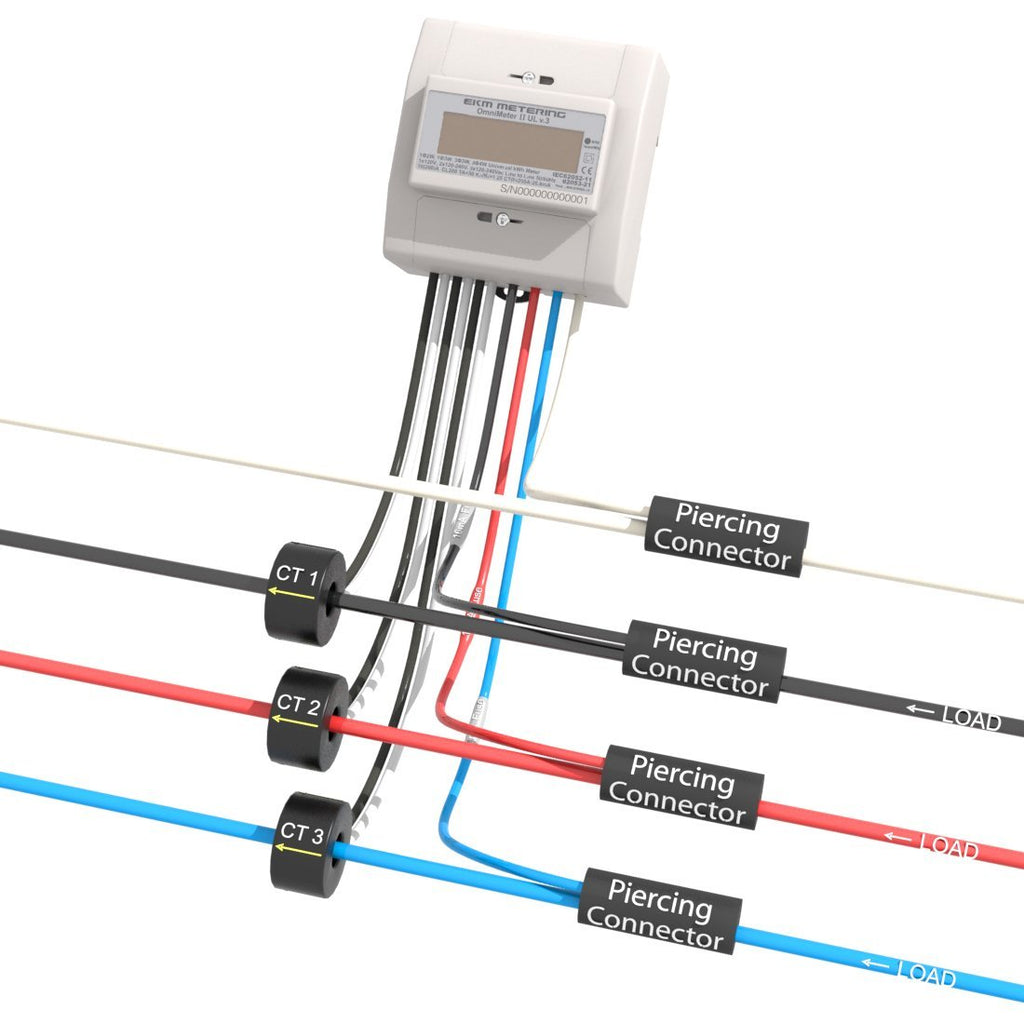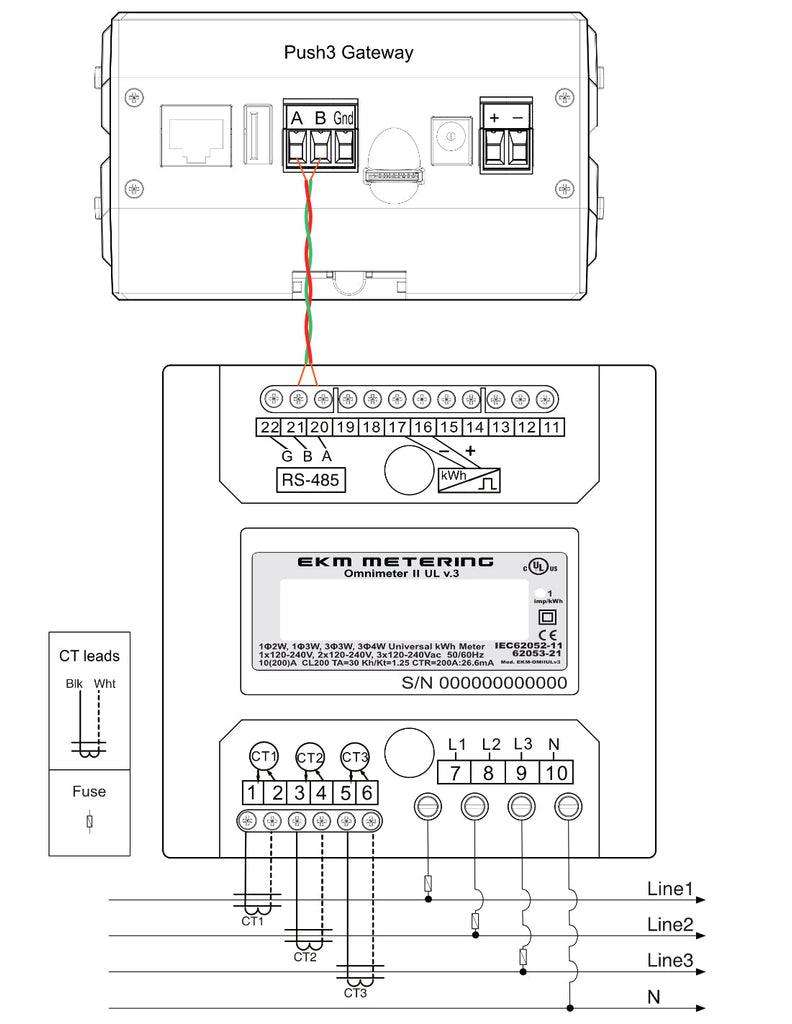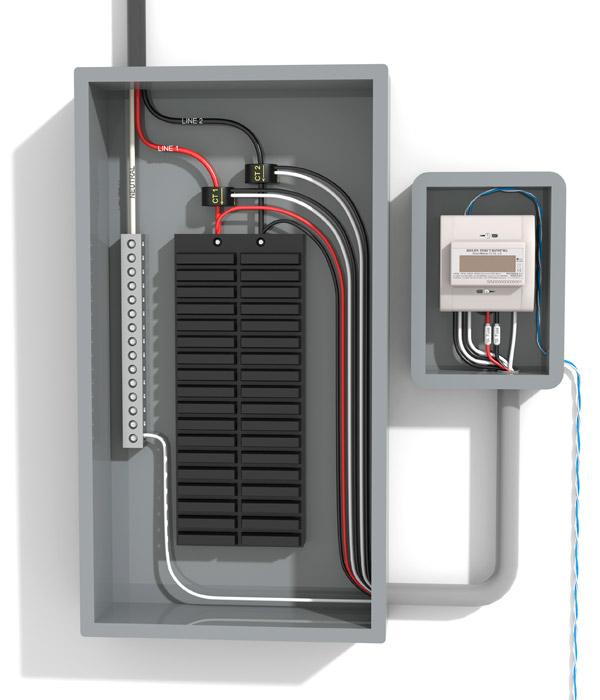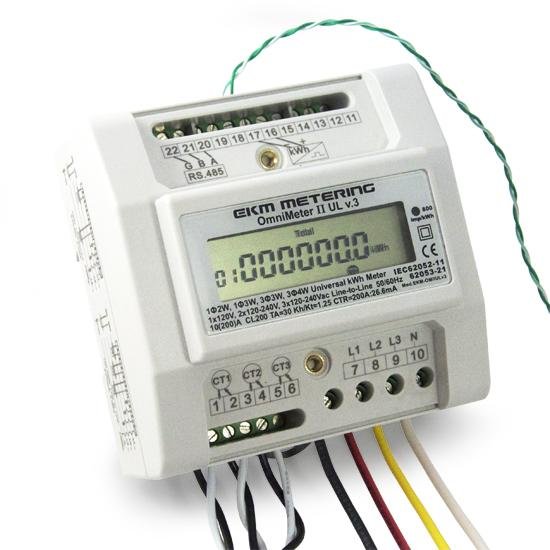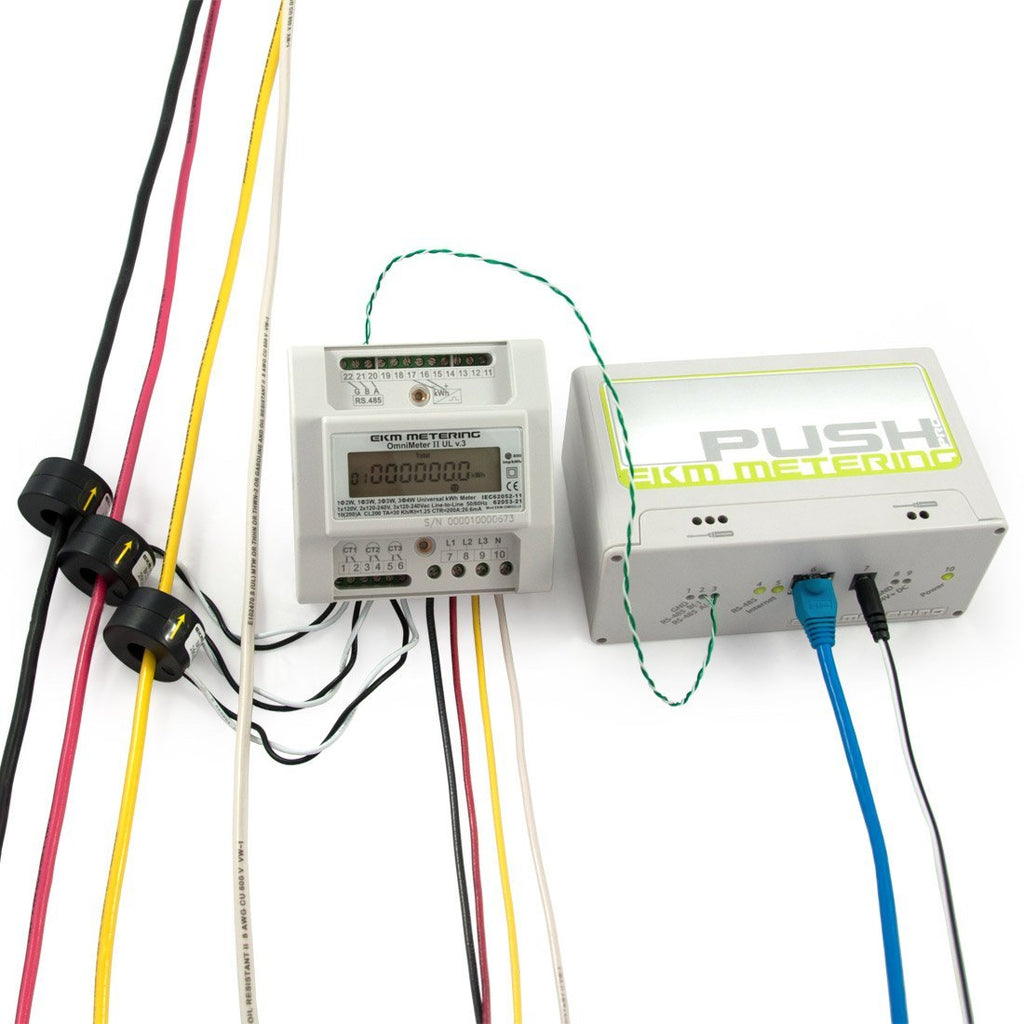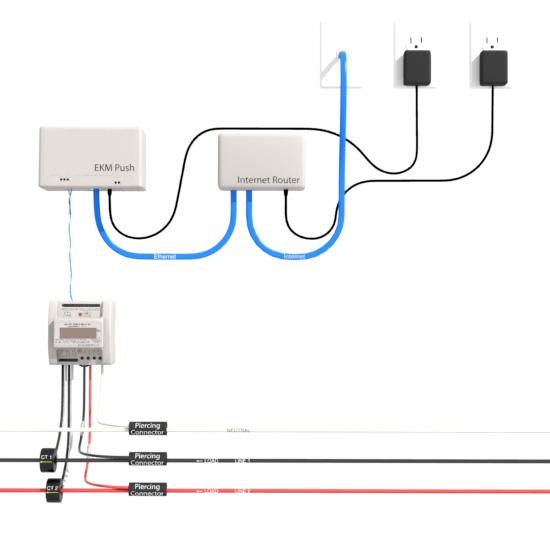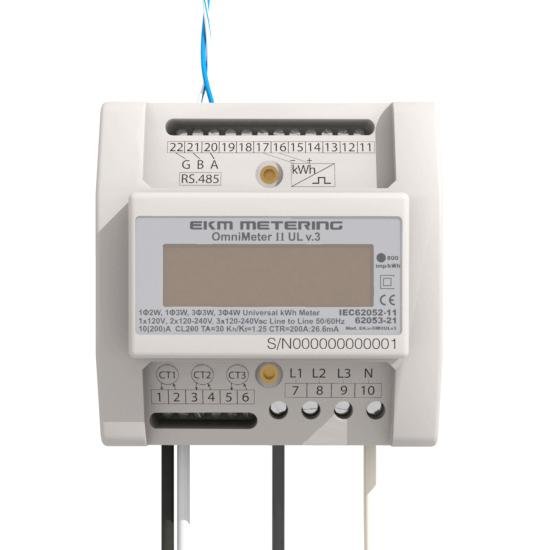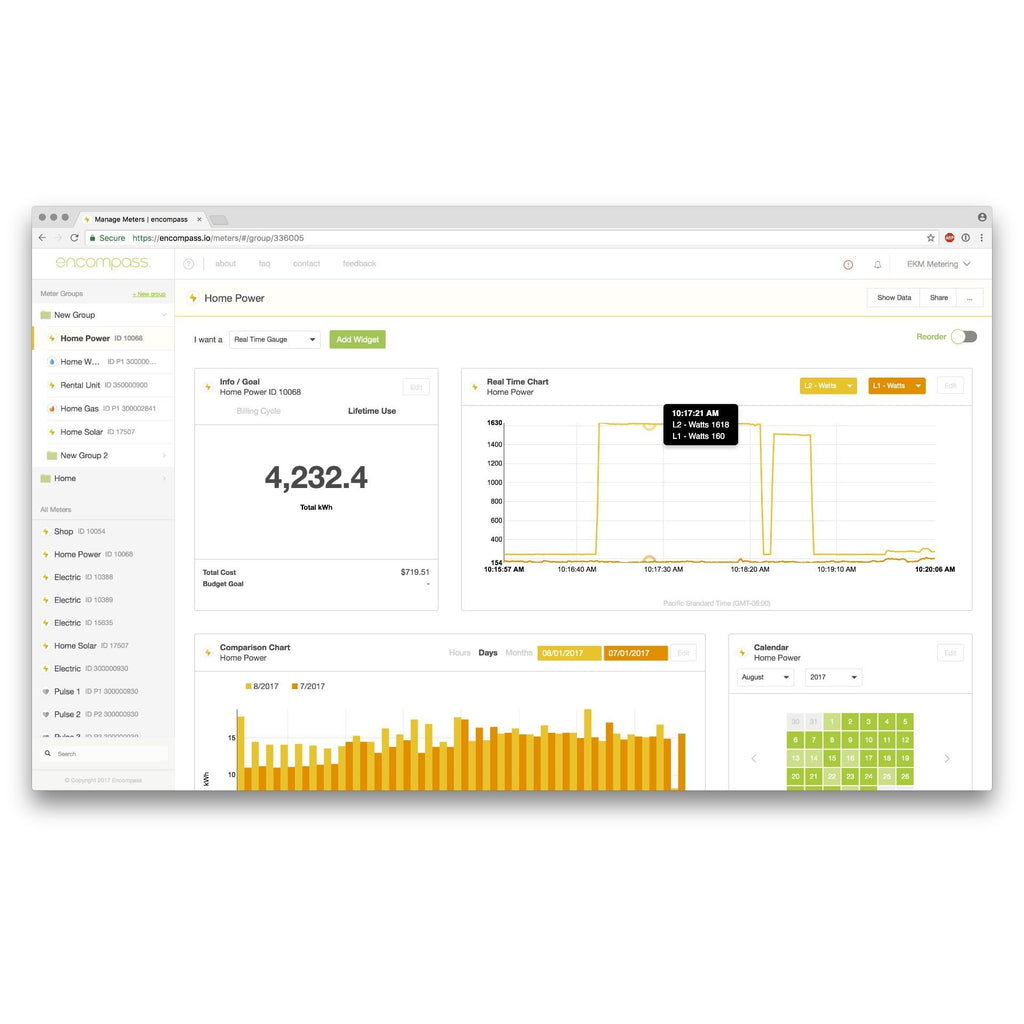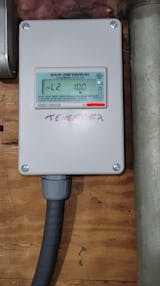EKM-Omnimeter II UL v.3 – Universal Smart Meter, Single Phase or 3-Phase, 120 to 240V, 50/60Hz, up to 5000 Amps
More information
Description: UL Listed Universal Smart Meter
Voltage: 120 volts, 120/240 volts, 120/208 volts, 230 volts
Amperage: Up to 5000 amps
Type: External CT, 50 or 60 Hz
System: Single-Phase 2-wire or 3-wire, 3-Ph. 3-Wire, or 3-Ph. 4-wire
Data: Smart Meter v.3 RS-485 Communications
Warranty: 10 Year Warranty
Model: EKM-Omnimeter II UL v.3
EKM-Omnimeter II UL v.3 – The Underwriters Laboratories (UL) approved version of our v.3 Omnimeter. This meter is both UL and cUL (Canada UL) Listed, and has been tested to CSA standards.
This meter is truly a worldwide universal meter and can be used to meter a wide variety of electrical systems. It meters systems from 120V single-phase 2-wire, to 240V 3-phase 4-wire, both 60Hz and 50Hz. There is not an electrical system, up to 240 volts, in common use that this meter will not support. Accurate to 0.5% (Class 0.5). We now stock CTs for up to 5000A, and much larger CTs are available on special order.
The only metering system that is commonly used that this meter will NOT support is 3-phase 3-wire 480 volts. You would need an Omnimeter HV v.5 for this system. These are only available "off menu" so please contact us if you would like more information about this meter model.
This meter has been accuracy tested and certified for by the State of California Department of Weights and Measures. It is California Type Approved and meets California standards for revenue grade metering. Many other states accept California Type Approval for their metering requirements.
Note: this meter must be paired with one or more Current Transformers in order to operate. The CT ratio can be set internally in the meter to work with up to 5000 amp CTs (no multiplier needed).
- Use 1 CT for 120 volt single phase North American, or 230 volt 2-wire foreign systems
- Use 2 CTs for 120/240 volt single phase systems
- Use 2 CTs for 3-phase 3-wire systems (no neutral)
- Use 3 CTS for 3-phase 4-wire systems
Easy clip-on DIN rail mounting.
How to install an Omnimeter (it is a v.4 Omnimeter in this case but v.3 Omnimeters are installed in a similar way):
This meter is capable of metering up to 480VAC but it is only UL Listed up to 240VAC.
These meters are also supported by our revolutionary EKM Push3 system. This is our cloud-based, plug-and-play, meter data solution. We are really excited about this new system, and recommend it for most remote reading applications that use our Omnimeter models. Push3 users can also take advantage of Encompass.io, which is our free online dashboard and meter management suite.
Encompass.io
Encompass.io is our free online meter management platform for monitoring data, managing meters, generating bills, and more. It is designed specifically for people who are remotely reading their meters via the Push3 system. This platform can be used to visualize data on customizable dashboards, visualize cost, monitor trends, group meters, and a lot more. Each meter and meter group in Encompass can also be set up to email you, and/or your tenant, PDF bills. Here is a sample PDF electric bill:
EKM Widget
The EKM Widget offers another option for quickly seeing your meter data online for EKM Push users. It is also easy to save and share your Widget setting once you have it setup how you want. Here are a couple examples:
EKM Dash
Our Omnimeters are also fully supported by our free, remote reading, EKM Dash software. If you want to read your Omnimeter on a computer locally, without the Push3 system, then this software is what you would use. You will also need an EKM Blink USB Converter in order to do so.
For more information about our products and services, we encourage you to visit our online Knowledge Base, which provides spec sheets, videos, tutorials, FAQs, diagrams, and more.
For a proper UL install, please follow the installation instructions here: EKM-Omnimeter II UL v.3 Spec Sheet
To better understand the differences between Omnimeter models you can download our Omnimeter and Communication Device Comparison Chart.
INSTALLATION DIAGRAMS
Single-Phase 2-Wire (Hot and Neutral) + Push3
Single-Phase 2-Wire (2 Hots, no Neutral) + Push3
Single-Phase 3-Wire (2 Hots and Neutral) + Push3
Three-Phase 3-Wire (3 Hots, no Neutral) + Push3
Three-Phase 4-Wire (3 Hots and Neutral) + Push3
Single-Phase 2-Wire (Hot and Neutral) + Push3 + 485Bees
Single-Phase 2-Wire (2 Hots, no Neutral) + Push3 + 485Bees
Single-Phase 3-Wire (2 Hots and Neutral) + Push3 + 485Bees
Three-Phase 3-Wire (3 Hots, no Neutral) + Push3 + 485Bees
Three-Phase 4-Wire (3 Hots and Neutral) + Push3 + 485Bees
Customer Photo Gallery
Be one of the first to share photos of your installed meters! Click the button below to submit your photos and receive $10 off your next order once your post is approved!

